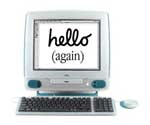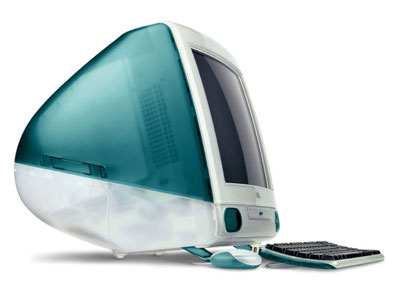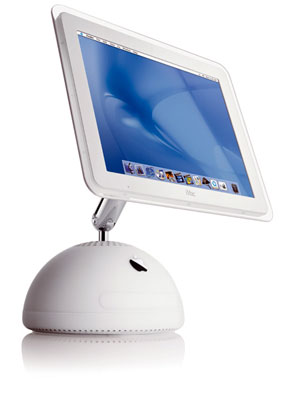 Today marks 10 years since the release of the iconic iMac. Introduced to the public in May of 1998 and available on August 15, 1998, Apple's friendly all-in-one has undergone many changes over the last 10 years in order to stay current. Although the iMac wasn't Apple's first or only all-in-one machine, it was—and remains—the most popular by far, and remains a symbol of Steve Jobs' lasting impact on Apple.
Today marks 10 years since the release of the iconic iMac. Introduced to the public in May of 1998 and available on August 15, 1998, Apple's friendly all-in-one has undergone many changes over the last 10 years in order to stay current. Although the iMac wasn't Apple's first or only all-in-one machine, it was—and remains—the most popular by far, and remains a symbol of Steve Jobs' lasting impact on Apple.
Jobs returned to Apple in 1997 after a 12-year hiatus spent tinkering with Pixar and NeXT. His first year back was marked by cutting back on projects, reorganizing resources, and desperately trying to turn things around for the suffering company. That included axing a number of products that were simply not going anywhere, such as the much-maligned Apple clone project and the Newton.
Apple's first brand-new product of the second Jobs era was the iMac. The teardrop-shaped, Bondi blue computer represented everything that hardcore geeks hated and that the general public loved. It was simple—no messy cords to connect monitor and tower—easy to carry around, cute, and had mass market appeal. "We designed iMac to deliver the things consumers care about most—the excitement of the Internet and the simplicity of the Mac," Apple said in its original press release about the iMac.

1998-2002
Suddenly, the dying Apple was back in business, and in a big way. In addition to being all about the Internet, the iMac was the first consumer machine to go completely legacy-free: it offered only USB in an era when serial, parallel, and SCSI cables were still cluttering up desktops, and completely ditched the floppy drive long before the rest of the industry. While Apple lost $878 million in 1997, it made $414 million in 1998 with the help of Jobs and the iMac. It was arguably an overnight success.
Check out these tech specs:
- 233MHz PowerPC 750 (G3) CPU
- 32MB of RAM (max 128MB)
- 66MHz FSB, 512KB L2 cache
- 2MB VRAM (ATI Rage IIc)
- 24x CD-ROM
- 15" CRT (1024x768)
- Internal modem, 10/100Mbps Ethernet
- 2 USB 1.1 ports
- 4.0GB hard drive

2002-2004
Since then, the iMac has undergone a number of facelifts, from the iLamp-style—"The CRT is officially dead," declared Steve Jobs in 2002—to the introduction of the flat form factor in 2004. In 2007, the flat form factor got an aluminum and glass makeover, which brings us to where we are today.

2004-2007

2007-?
Mac mini aside (which may or may not be on the way out), the iMac defines Apple's consumer-facing desktop offering, and it's not going anywhere anytime soon. Notebooks may be on the rise, but desktops still have their uses, and although Apple has a number of high-profile projects on the table—iPhone, anyone?—the iMac will live on for as long as Apple continues to sell desktops.
Happy 10th anniversary, iMac, and many happy returns!
reader comments